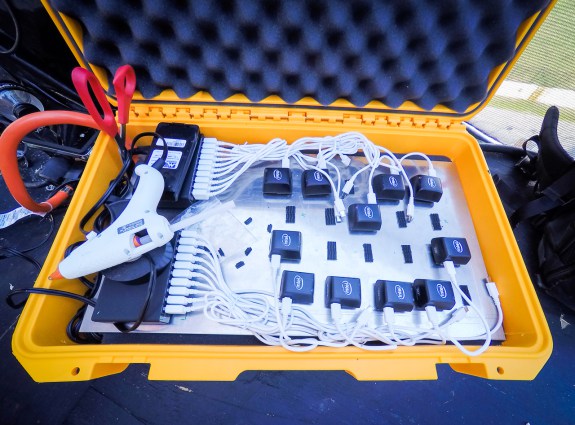Intel made an appearance at the recent summer X Games in Austin, TX with the Curie, a gadget for sensing the motion and position of skateboarders and BMXers. The Curie, attached to the bikes or helmets, measured the dynamics of the tricks performed by the participants.
An Intel 32 bit Quark SE system on a chip sent the telemetry data in real-time using Bluetooth. The module contains an accelerometer and gyroscope to capture all the twists, turns, and tumbles of the athletes. An analysis of the data was presented as part of the on-screen graphic displays of the events.


An interesting results of the measurements is seeing the 20 g landing spike experienced by riders when they land. A rider weighing 175 lbs is landing with a force of 3,500 lbs. Since it’s instantaneous the riders aren’t breaking bones, but they say it doesn’t feel good.
As sensors, processors, and wireless communications gets smaller and more integrated measuring sports performance is going to have big impact on sports. Viewers will be inundated blessed with more data to view. Athletes will use the data to tune their performance. We’ve seen another example of this with the Puma BeatBot for training runners.
(Now where is that bag of money from Intel?)
















What will be even more interesting is when intel release libraries to support the pattern matching silicon (128 node neural network) in the curie module. It will be able to perform real-time classification of the telemetry data, This will allow for the automatic recognition of tricks that the skateboarders and BMXers are performing.
I am interested once this can be used to control realtime virtual music instruments. Gestural control!
so, in essence those are Wiimotes?
I saw that data while watching BMX dirt freestyle and immediately didn’t believe the G numbers. Later they showed the device mounted to the stem of the handlebars, and it makes more sense that the bike may see 20 G as it makes first contact with the ground after a jump. Still, it’s a peak / impulse value. They should do some filtering / averaging to make the reading more representative of what the rider feels.
I was also dubious of those numbers.
Intel Product Placement Ad on HaD
Sorry.
Sounds great, but a like a significant number of suckers, I have sent mine back for refund as there appears a batch that will not upload *.bin files or upload firmware.
I even got hold of the Intel Curie factory flash kit and even it would not see the board.
Same problem on two different computers, on same USB ports that, with same cables, that will happily program AVR style boards.
No one, Intel or Arduino community, was able to solve the problem.
Whether it is dud batch of Curie, problems with driver compatibility with Windows (although similar problem reported by some on Linux) it was unuseable.